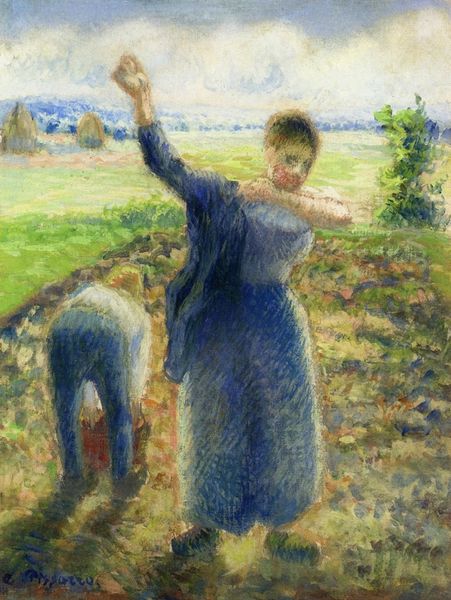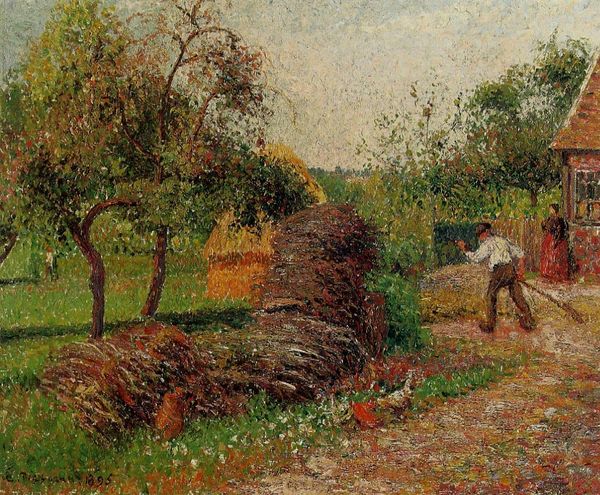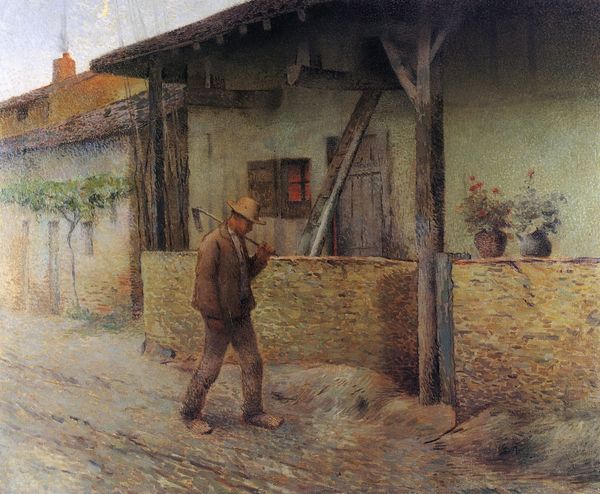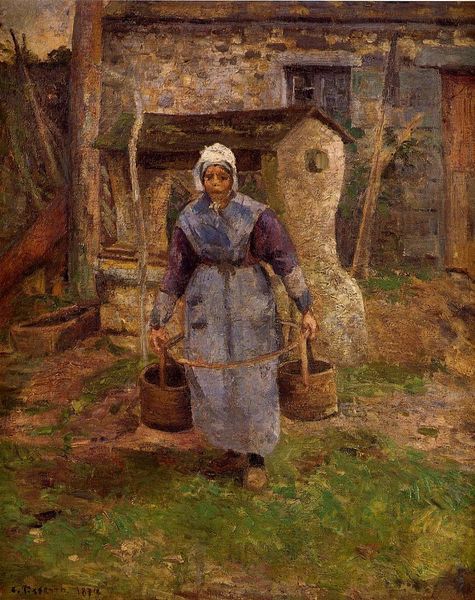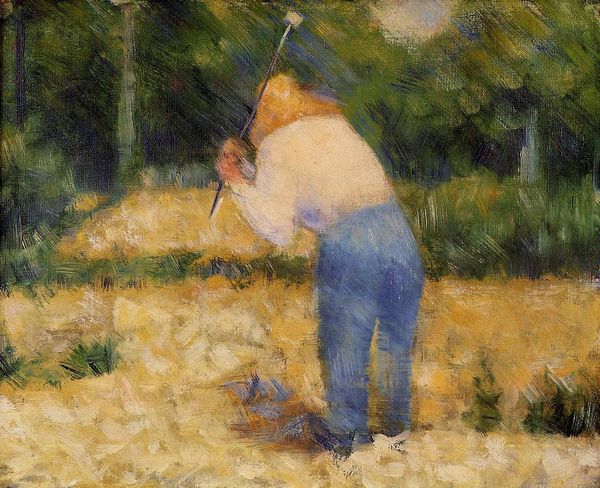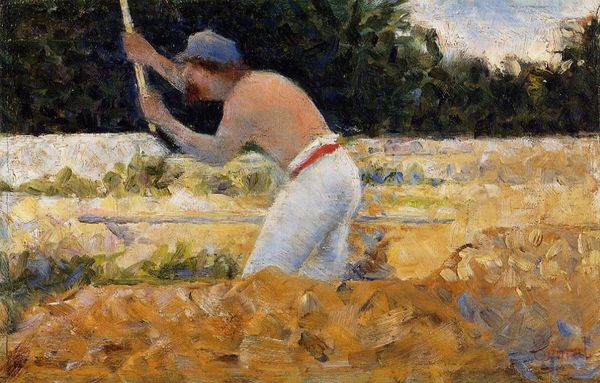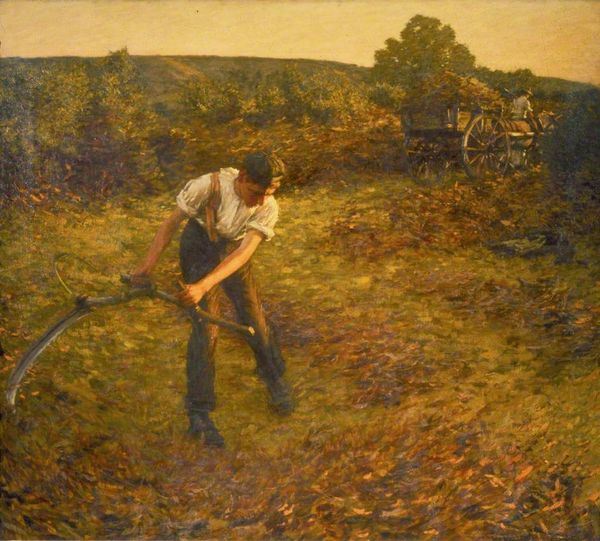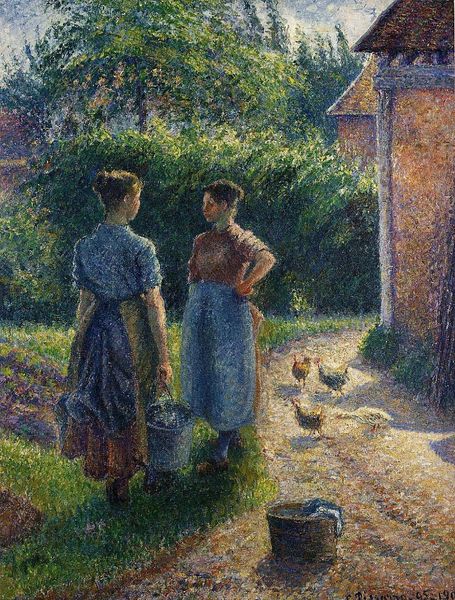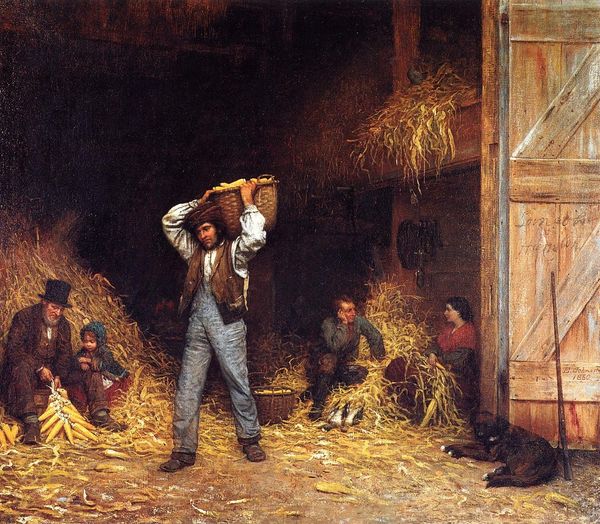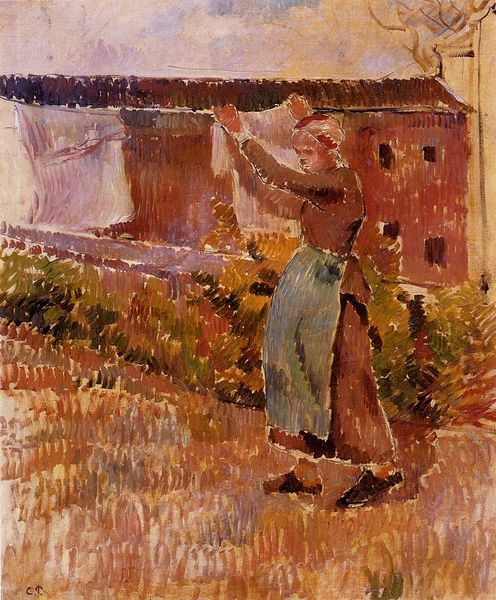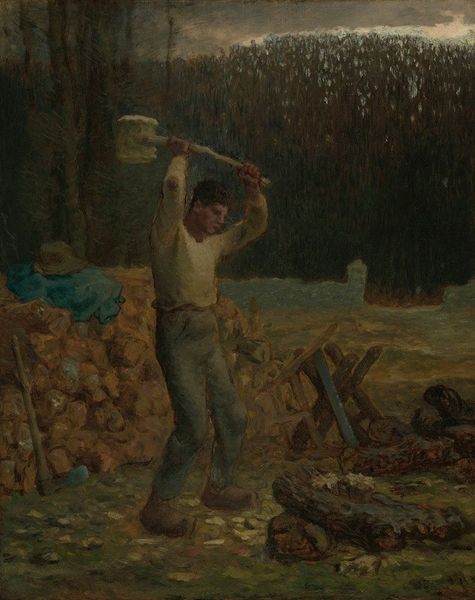
painting, plein-air, oil-paint
#
painting
#
impressionism
#
plein-air
#
oil-paint
#
landscape
#
impressionist landscape
#
oil painting
#
genre-painting
#
realism
Copyright: Public domain
Curator: Let's discuss Camille Pissarro's "Pere Melon Cutting Wood," an oil on canvas he created around 1880. It’s held in a private collection. Editor: My first thought is how effectively Pissarro captures the *light* of rural labor, giving this otherwise everyday scene a soft, almost idyllic glow. It feels so…un-oppressive. Curator: Exactly! Look how the light isn’t just illumination; it carries a feeling of hope, perhaps of sustenance earned through honest work, echoed across cultures. There is dignity here. Editor: Definitely a counterpoint to the usual representations of rural folk at the time, often seen as downtrodden or ignorant. Pissarro imbues his figures with an active role. The woman near the cottage is perhaps working with textiles, her figure bent towards some daily work. This wasn't simply painting landscapes. Curator: Indeed. Notice how the axe raised is nearly level with the roofs of the farm structures, mirroring shapes in the same line as the crest of his hat. Even in hard labor there’s an echo of shelter, stability and continuity, deeply interwoven with the image of family, labor, and sustenance. He repeats stable pyramidal shapes to reflect this foundation. Editor: I see what you mean. There’s a compositional rhythm, but does Pissarro avoid glorifying the worker to any extent? Is he fully confronting class dynamics or leaning into aestheticizing a certain idealized peasant life? Curator: It's true Pissarro was no stranger to idealizing pastoral life, but consider his commitment to portraying dignity. The repetition of shape indicates perhaps more universal themes rather than being about any single peasant’s dignity alone. Editor: Still, Pissarro chooses not to depict abject poverty or suffering, doesn't he? The painting lacks grit in that sense, the sort that was pervasive at that point of history. Curator: Perhaps, yet his art also offers a space for viewers to appreciate shared human values—community, effort, harvest—themes found even today across diverse cultural landscapes. The memory persists. Editor: I appreciate you pointing that out. Despite its possible romanticization, this painting presents us with labor presented as a worthwhile aspect of a lived, human life. It reframes, rather than erases, existing values. Curator: I see it as Pissarro reflecting archetypal ideals still vibrant beneath the surface, even now. Editor: And I, thinking about today's world, appreciate the reframing this offers around themes like productivity, work ethic, and sustainability, things still shaping modern lives.
Comments
No comments
Be the first to comment and join the conversation on the ultimate creative platform.

